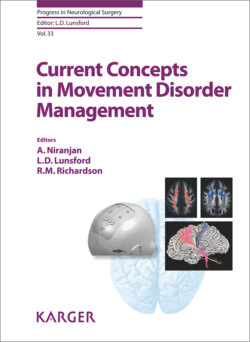Читать книгу Current Concepts in Movement Disorder Management - Группа авторов - Страница 48
Atypical Parkinsonian Syndromes
ОглавлениеThis group of disorders, also known as Parkinson-plus syndromes, is comprised of dementia with Lewy bodies (DLB), progressive supranuclear palsy (PSP), corticobasal degeneration (CBD), and multiple system atrophy (MSA). DLB is relatively common, widely regarded as the second most frequent neurodegenerative dementia and estimated to represent 11–22% of dementia in the community [9]. The other disorders are rare, with prevalence rates of several cases per 100,000. The atypical Parkinsonian syndromes share similarities in motor symptoms with PD due to the degeneration of dopaminergic neurons but have a worse prognosis overall, with faster progression, more severe disability, and death typically occurring within a decade.
Clinical suspicion for an atypical Parkinsonian syndrome arises based on red flags in the history such as symmetric onset of Parkinsonism or unusual neurologic signs on examination. In DLB, cognitive and psychiatric features predominate early in the disease course, typically before or concurrent with the development of Parkinsonism. In PSP falls and gait freezing occur early, accompanied by axial rigidity and bulbar dysfunction, with the characteristic vertical supranuclear gaze palsy developing at some point in the disease course. In CBD, the characteristic features include highly asymmetric rigidity and dystonia, cortical sensory signs, apraxia, and alien limb phenomenon (involuntary movements of a limb associated with regard of the limb as a foreign object). In MSA, autonomic features are prominent but patients may present with a predominant Parkinsonian phenotype, the more common form, or a predominant cerebellar phenotype.
Treatment of atypical Parkinsonian syndromes is symptomatic, as in PD. Dopaminergic medications are usually given for motor symptoms, with a minority of patients experiencing some benefit. The levodopa response in these disorders is less robust and more variable than in PD, and side effects are frequently more troublesome. Currently, there are no surgical treatment options for these disorders.
